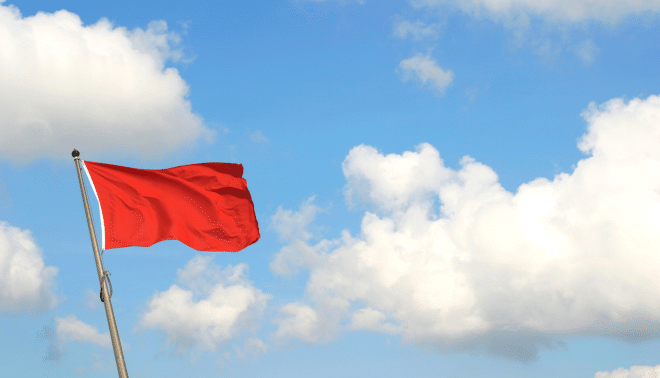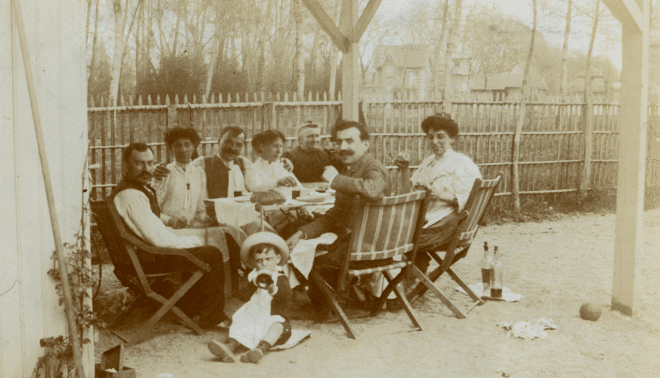Expand your genealogy knowledge with this four-week genealogy challenge: the Genealogy Dictionary Challenge!
Each day for four weeks, learn one forgotten, old or family history-related word to brush up on words you may have forgotten that no doubt will show up in your ancestor’s records.
Day 28:
Metes and bounds: A land survey method employing compass directions, natural landmarks and distances between points.
Day 27:
Quaker: A member of the religious group called the Society of Friends. Quakers kept detailed records of their congregations, including vital statistics.
Day 26:
Quarter section: One-fourth of a section of land in the rectangular survey system, equal to 160 acres.
Day 25:
Rectangular survey system: The land survey method that the General Land Office used most often. It employed base lines, one east-west and one north-south, that cross at a known geographic position. Two large rectangles, called townships—each generally 24 miles square—are described in relation to the base lines. Townships are subdivided into sections.
Day 24:
Pension (military): A benefit paid regularly to a veteran (or his widow) for military service or a military service-related disability.
Day 23:
Social Security Death Index: An index of Social Security death records. Generally the index includes the names of deceased Social Security recipients whose relatives applied for Social Security death benefits after their passing, making them valuable for genealogists. Also included in the millions of records are approximately 400,000 railroad retirement records from the early 1900s to 1950s.
Day 22:
Y chromosome: Genetic material passed down from father to son. Because surnames also pass from father to son, Y-DNA tests can confirm (or disprove) genealogical links through a paternal line. Y-DNA surname studies are the most popular application of genetic genealogy.
Day 21:
Witness: A person who sees an event and signs a document attesting to its content being accurate. Although family members often served as witnesses, don’t assume that witnesses on a record are relatives—friends, neighbors and business associates also commonly witnessed documents.
Day 20:
Volume number: On a Soundex or Miracode index card, the number of the census volume in which the indexed name appears.
Day 19:
NGS Quarterly (NGSQ) system: A narrative report showing an individual’s descendants arranged by generation, this uses an alternative numbering system to the Register report. Every child in a family gets both a Roman numeral and an Arabic numeral. A plus sign indicates that a child appears as a parent in the next generation. Both the NGS Quarterly Report and Register Report make good books. Named for the journal of the National Genealogical Society.
Day 18:
Periodical Source Index (PERSI): A print and online index to more than 2000 genealogy and local history periodicals published in the U.S. and Canada between 1847 and 1985. PERSI is a project of the Allen County Library in Fort Wayne, Ind., and available through HeritageQuest Online (access through a subscribing library).
Day 17:
Probate records: Records disposing of a deceased individual’s property. They may include an individual’s last will and testament, if one was made. The information you can get from probate records varies, but usually includes the name of the deceased, either the deceased’s age at the time of death or birth date, property, members of the family, and the last place of residence.
Day 16:
Primary source: A record or other source created at the time of a particular event. A primary source is always the original record—for example, birth and death certificates are primary sources for those events. But an original record is not always a primary source: For example, a death certificate isn’t a primary source of birth information.
Day 15:
Consumption: Another term for the infectious disease tuberculosis, which was one of the leading causes of death in the United States in the 1800s and early 1900s.
Day 14:
Plat: A drawing that shows the boundaries and features of a piece of property. In genealogy, platting refers to creating such a drawing from a metes-and-bounds or legal land description as a surveyor would have done.
Day 13:
Pre-emption: The right of a settler to acquire property that he had occupied before the government officially sold or surveyed it.
Day 12:
Aliquot parts: In the rectangular survey system, a description for an exact subdivision of a section of land. Aliquot parts use directions and fractions to indicate the land’s location—for example, “W 1/2 SE 1/4” represents the west half of the southeast quarter of a township.
Day 11:
Ahnentafel: A German word meaning “ancestor table.” This system of numbering gives each ancestor a number and makes organization and reference easier. Fathers are even numbers, mothers odd. To find a father’s number, double the child’s number (if you are #1, then, your father is #2). Add one to the father’s number to get the mother’s number (your mother would be #3).
Day 10:
Freedman: A male released from slavery; an emancipated person.
Day 9:
Dower: a legal provision for a woman’s support and that of her children after her husband’s death; typically one-third of the husband’s property; also known as “widow’s thirds”
Day 8:
Banns (or marriage banns): Church-generated documents publicly stating couples’ intent to marry. The custom dates back to Colonial America; banns were posted or read on three consecutive Sundays.
Day 7:
Vivandière: A woman who followed a military regiment as a sutler or canteen keeper. Though exact numbers are unknown, many women served in this capacity during the American Civil War.
Day 6:
Bondmaid: a female slave or indentured servant
Day 5:
Haplogroup: an identification of the genetic group your ancient ancestors (10,000 to 60,000 years ago) belonged to; sometimes referred to as your branch of the world’s family tree
Day 4:
Abstract: An abbreviated transcription of a document that includes the date of the record and every name it contains; it may also provide relationships or descriptions (witness, executor, bondsman, son, widow) of the people mentioned.
Day 3:
Administratrix: a woman assigned by the court to administer an estate where there is no valid will
Day 2:
Zouaves: A name adopted by some Civil War Union volunteer regiments, who wore brightly colored uniforms, similar to the French light infantry units of the same name.
Day 1:
Intestate: Description of a person who died without leaving a will.
Save





